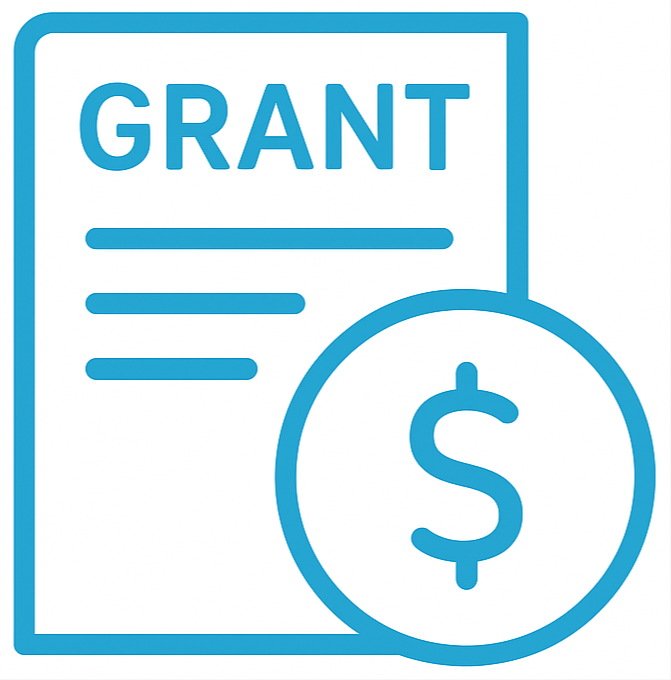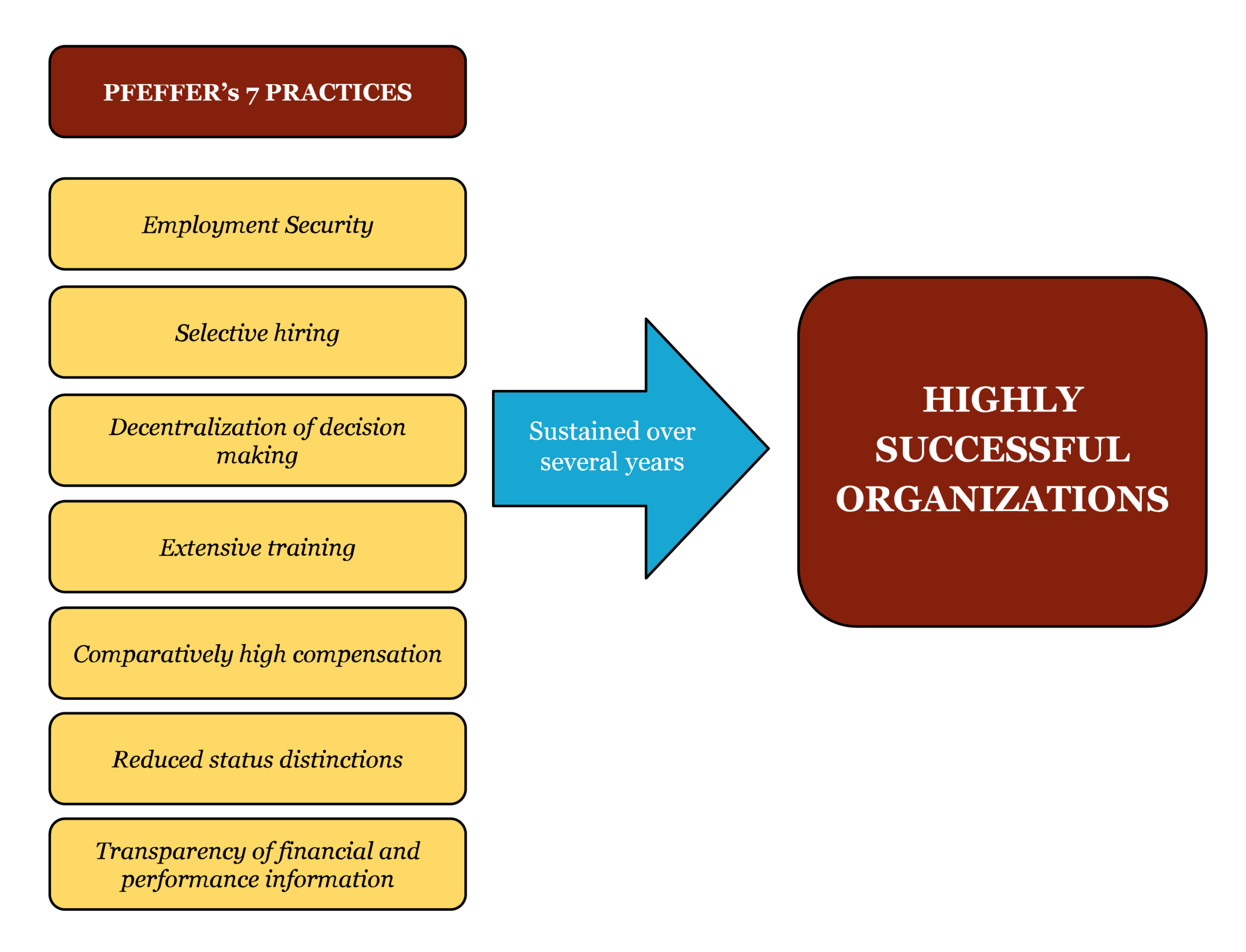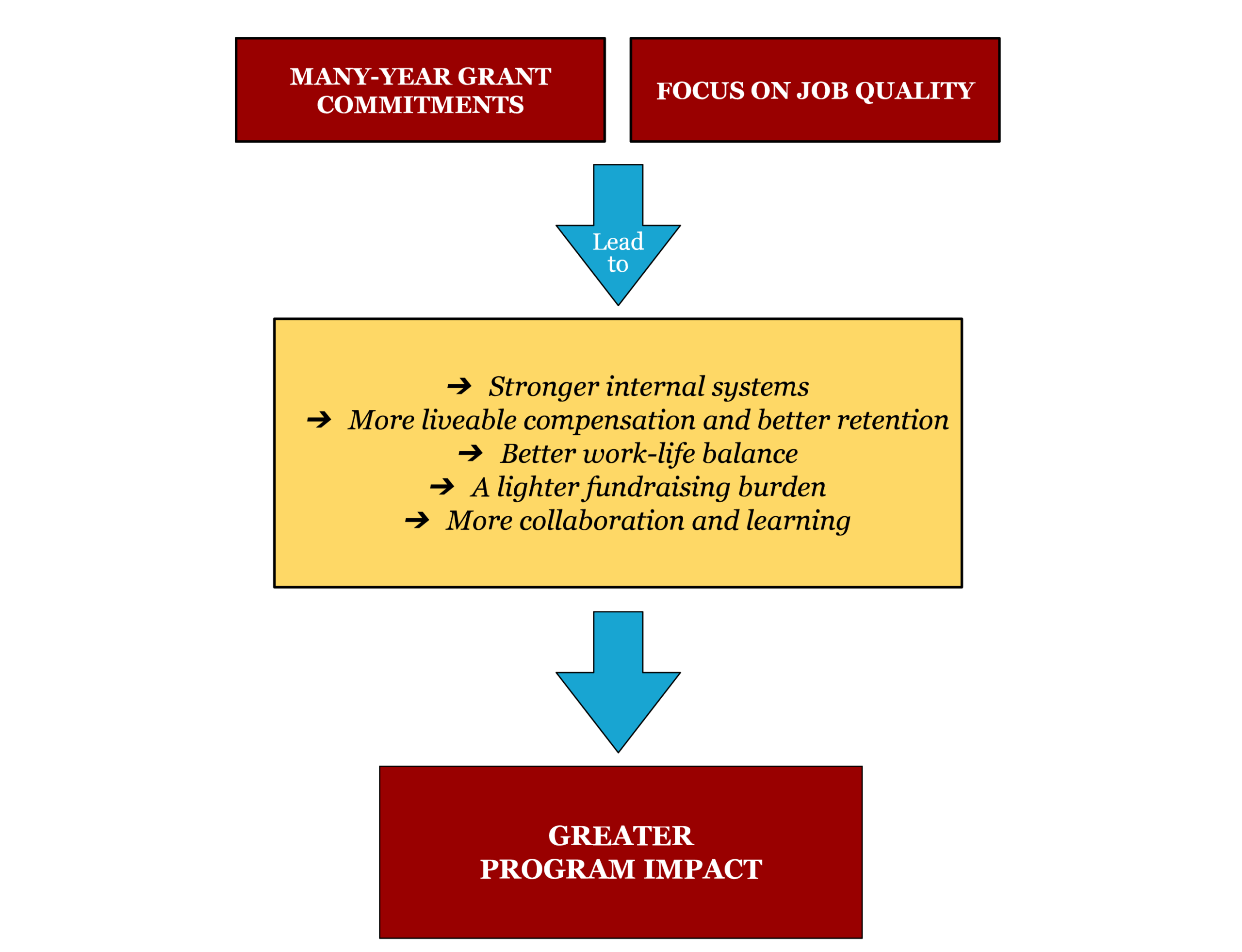
Grant commitments that are not just multiyear, but many-year, if they encourage good jobs, can have extraordinary impact on nonprofit staff well-being and on program success. Could more foundations follow the Endeavor Fund model?
At a Glance - Executive Summary
They were eye-popping numbers. Seven-year grant commitments. $500,000 per year. Unrestricted. Equally remarkable was that, while the funds are unrestricted, the funder encouraged the organizations to use them to invest in job quality and staff well-being.

Are we describing an outlandish utopian fantasy? No—these grants were made in 2023 by the Walter & Elise Haas Fund (often referred to as Haas Sr. Fund) to seven Bay Area community organizations through their brand-new Endeavor Fund grantmaking program.
Now, as these unusually long grants enter their third year, the impact on the staff and programs of the recipient organizations is already becoming clear. At their budget size, between approximately $5 and $10 million, an extra half million a year is a substantial boost of 5% to 10% of the organizations’ total revenue.
Our independent research found that the grantee organizations are thriving thanks to this secure funding stream. They share six primary areas of growth:
- Stronger internal systems
- More liveable pay and benefits, leading to better staff retention
- Better work-life balance
- A lighter fundraising burden
- More collaboration and learning
- Greater program impact for the communities they serve
We started to ask ourselves: what does it take for a non-profit to win? What do they need? Well, nonprofits have been telling us for a really long time what they need. They need multiyear general operating support grants, they need transparency, dependability in their funders, they need room to stretch and grow and innovate, and importantly they need high-quality, committed staff that earn living wages and have the same opportunity to flourish that we want for everyone in the community.
Jamie allison
Executive Director of the Walter & Elise Haas Fund
The Endeavor Fund
After the pandemic shutdown in 2020, the staff and board of the Walter & Elise Fund held a series of discussions that resulted in a remarkable new grantmaking initiative. After 4-hour interviews of ten community groups in the Bay Area, they chose seven organizations and committed to give them $500,000 unrestricted yearly grants for seven years starting in 2023, a total of $3.5 million. They created a learning cohort that meets yearly. To concentrate the funding for these larger grants, they sunsetted many of their prior grantees, which had each received an average of about $37,000.
To hear Endeavor Fund voices about their origin stories and practices, see Appendix 1.
This report, based on 14 interviews in 2024-5 (see Methodology Appendix for more details), describes what six of the seven grantees have been able to achieve thanks to the security and stability of seven-year guaranteed funding.
This is the first research publication of the Upgrading Nonprofit Workplace Study, a national inquiry into what it takes for nonprofits—together with their funders—to significantly improve job quality and employee well-being in today’s unstable operating environment. The study was conducted by Staffing the Mission, the research arm of Fund the People. Fund the People’s mission is to maximize investment in the nonprofit workforce. Staffing the Mission, which helps turn burnout jobs into jobs sustainable for the long haul, was founded in 2015 and became part of Fund the People in 2023.
The Seven Grantee Organizations of the Endeavor Fund
The seven grantee organizations all work in varied ways to improve gender and racial equity in the San Francisco Bay Area. Two are unionized, while five are not.
See Appendix 1 for more on their missions, budget sizes, and summaries of their prior challenges and recent improvements.
East Bay Alliance for a Sustainable Economy - Community organizing for good jobs and healthy communities
East Bay Community Law Center - Free legal services for low income residents
La Cocina - Incubator for immigrant food businesses
Oakland Kids First - Afterschool programs and organizing of high school students
Oakland Promise - Support for children and youth to complete high school and succeed in college and/or career
Young Women's Freedom Center - Support for young women and trans youth who have been involved in the juvenile justice system or underground street economies to transform their lives
Youth Organize! California - Empowerment of young people for social justice
The Case for Many-Year Grants
Faced with staff burnout, high turnover, and high vacancy rates, many nonprofits want to improve job quality, but don’t feel they can. It’s not only grant restrictions that thwart them, but the instability and unknown future of funding also prevents them from making job-improvement commitments. The reluctance of top managers and board members to commit to better pay and benefits stems from the fear of not being able to sustain the extra, cumulative expenses in future years, given their one- and two-year funding sources.

Many funders, aware that nonprofits face multiple crises in the current political and economic environment, have lifted restrictions and reporting requirements, provided modest supplemental grants for staff well-being, and/or increased grant amounts. However, one very impactful strategy is too seldom tried: extending multiyear grants into ‘many-year’ grants, which we define as grants with terms of five years or more.
Many-year grants offer enough years of funding to provide stability for longer-term planning, introducing new management practices, and adjusting salaries and benefits to account for rising cost of living. This, in turn, can increase the attractiveness, stability, and sustainability of nonprofit jobs, improving organizational ability to recruit and retain highly-qualified teams.
Research into organizational success confirms that lasting change takes multiple years. In the acclaimed management book The Human Equation: Building Profits By Putting People First (Harvard Business Review Press, 1998), author Jeffrey Pfeffer draws on extensive research into corporations with exceptional track records to conclude that a productive staff depends on doing three or more of seven recommended staff-friendly practices sustained over at least several years. Most of Pfeffer’s recommended practices have been tried by one or more Endeavor Fund grantees in these last three years: increasing job security; decentralizing decision-making; reducing wage differentials; offering extensive training; increasing transparency; and offering high compensation. In Pfeffer’s findings, a combination of three or more of these practices, implemented over a sustained period, resulted in improved profits, long-term sustainability of the firm, and value for customers and shareholders.

How could Pfeffer’s principles be manifested in nonprofits? The longer the grant commitment, the more grantees can invest in their people-systems, creating powerful teams, stronger organizations, and greater program impact.
Nevertheless, many-year grants are not the norm, except in a few narrow philanthropic sectors. Grants of 5+ years are commonly given by rightwing foundations to think tanks. Gifts to universities are sometimes long-term. And a few of the very largest foundations, such as the Ford Foundation’s BUILD program and the Packard Foundation, give some many-year grants. However, they are exceedingly rare among the thousands of foundations and public sector funders that provide the vast majority of nonprofit funding. This needs to change.
Especially at this time of peril for the nonprofit sector, when many organizations are losing federal funding, serving imperiled communities, and even having their nonprofit status threatened, nonprofits need relief from the burden of applying for and reporting on one-year and two-year grants, and the turmoil caused by uncertain funding streams.
The calls for funders to step up and meet the moment ought to include recommendations to greatly increase the timeframe of grant commitments to a minimum of five years.


You can’t run a good organization if your core systems, infrastructure, and support for the people in it are weak.
Bill Heiser
Board member of Oakland Kids First
Findings
better for employees
Stronger Internal Systems
Before the Endeavor Fund seven-year grants began, some of the grantee organizations had been relatively informal, with underdeveloped human resources (HR) policies, random job titles and descriptions, and/or erratic pay scales. Many of the improvements described below—whether in pay, benefits, paid leave, morale, retention, or program impact—flowed from an almost across-the-board sharpening of internal systems.
Every Endeavor Fund grantee formalized some staff-related systems, with strikingly positive results.
Some interviewees emphasized HR improvements:
- Clearer job descriptions and clarity about how each job fits into the organization’s overall program plan have reduced fatigue and burnout, said the Executive Directors of both YO! Cali and the Young Women’s Freedom Center.
- One first-time Executive Director expressed appreciation for being given intensive coaching.
- A ‘progressive discipline’ system for staff performance and behavior issues was codified in the East Bay Community Law Center’s latest Collective Bargaining Agreement.
- At the Young Women’s Freedom Center, the co-directors created a staff handbook that clarifies staff responsibilities and accountability, as well as policies supporting the health and wellness of team members; a periodic “leadership boot camp” orients new and continuing staff to the policies in the handbook.
Another frequent upgrade is staff input channels. At the non-unionized organizations in particular, employees reported there had previously been a shortage of channels for giving their input. Now several organizations invite more staff input, which is aligned with Pfeffer’s success practice of reduced status distinctions.
For example:
- As soon as the Endeavor Fund grants began, La Cocina hired their first HR manager, who has spent time listening to every employee’s concerns, increasing staff trust in management.
- In the latest union contract, the East Bay Community Law Center (EBCLC) created an Equity and Inclusion Committee and a Wellness Committee where staff members can raise issues in those two areas.
- Some of the organizations now administer staff surveys so that they can better respond to employee concerns.
Expansion of internally focused staff positions was another form of growth. As a result of having many-year funding, Youth Organize! California (YO! Cali) is now able to hire new Operations and Finance directors, greatly strengthening its infrastructure.
Describing the prior problems at their workplaces, several interviewees talked about inconsistent and inequitable pay rates, and a lack of transparency about how pay was set. Since the Endeavor Fund grants began, market compensation studies by several grantee organizations led to structured pay bands, with steps within each grade, so that employees have the predictability of knowing how their pay will grow with their seniority. Such transparency of ffinancial information is one of Pfeffer’s seven practices that contribute to organizational success.
The slack afforded by the seven-year guaranteed funding allowed Oakland Kids First managers and board to take their time, consulting lawyers and consultants, comparing their pay levels not just to local nonprofits, but to the cost of living. The result was a coherent compensation policy that reflects their values and will be durable over time.
In all the grantee organizations interviewed, inconsistency and inequity in compensation have been weeded out.
For a long time, we were scrappy and underpaid.
Leticia Landa
Executive Director of La Cocina
Increased Pay and Financial Benefits, Leading to Better Staff Retention
The newly standardized pay scales tended to be significantly higher than the previous levels, which were often far below the extremely high cost of living in the Bay Area. Above-market pay is one of Pfeffer’s seven practices that lead to organizational success, but that is a high bar for these California nonprofits to clear, given the local high-tech sector’s lofty pay. According to the MIT Living Wage Calculator, the annual pre-tax pay needed to support one childless person in the Bay Area is $64,286. After the recent raises, most of the jobs at these nonprofits meet that benchmark, and come close to half of the $135,154 needed for two working adults to support one child.
Before the Endeavor Fund grants began, pay levels had been inadequate at some of the grantee organizations.
Even for lawyers at the East Bay Community Law Center (EBCLC), it had been hard to make ends meet. Rosa Bay described the salaries as “pre-law-school, BA level—and I had $200,000 in debt!…I had to have austerity in my personal finances. In my late 20s, I was thinking about marriage, but delayed my plans.” EBCLC flagged low pay as a racial equity problem, as lawyers of color with student debt and low-income family members couldn’t afford to work there, leaving them with mostly white lawyers; thus large raises were a step towards closing the racial wealth gap.

The founders of YO! Cali realized that by thriftily paying themselves only modest salaries, they were suppressing the pay of the entire staff, so they bumped everyone up to market rates.
Some of the raises have gone beyond a living wage to closer to a thriving wage, at least for staff with no dependents. The lowest base pay at EBCLC was raised from $50,000 to $58,000 in the latest union contract. Some previously low-paid people at YO! Cali got an immediate bump of $8,000; others got $2,000 or $3,000. In addition, annual cost of living adjustments have been built into union contracts or pay scales.
When board members or funders question whether these new expenses represent “a bloated budget,” Lukas Brekke-Miesner says, he is able to cite the Endeavor Fund’s emphasis on job quality and staff well-being as justification. He tells them, “You don’t want to run afoul of your biggest funder by not prioritizing the sorts of things that they care about.” Having a large, many-year, job-quality-focused funding source can bolster nonprofits’ case for prioritizing staff well-being.
The thriving-wage pay scales are enabling employees to dream beyond mere subsistence. When we asked Uma Nagarajan Swenson, a Communications Associate at EBASE, how her higher salary was impacting her life, she said, “Living in the Bay Area is incredibly expensive, so having a salary that allows me to pay off my [student] loans while also paying all my living expenses, that’s great. I’m also trying to balance that with trying to save sustainably, and trying to contribute to my 401K ... It’s really, really incredible to have some semblance of financial stability at this stage in my life and career, especially looking ahead towards ever going to grad school.”
Financial benefits also grew at most of the organizations.
Here are a few examples out of many that were shared during the interviews:
- EBCLC recently began offering a language bonus to staff who work with clients who speak another language besides English.
- Increasing retirement contributions boosts long-term retention, said Kate O’Hara, Executive Director of EBASE, because “as people get more senior in their careers, they start to think more about retirement."
- La Cocina added janitors and other hourly workers, previously uninsured, to their health plan. And Sarah Lau was able to replace her out-of-date, scratched glasses when La Cocina added a vision care benefit.
- Once Oakland Kids First started offering a match up to three percent of salary, all the formerly unenrolled people joined the 403(b) retirement plan, resulting in better staff retention. They also started offering quarterly wellness bonuses, and paying for staff’s cell phone service.
The priorities that came from the staff were not just one particular kind of leave, but just being able to have the space and time to attend to all the other parts of our lives while we are doing this important work. Understanding that we’re all-in on the mission and vision—and we are also whole people that have whole lives.
Linda Sanchez
Executive Director of Youth Organize! California
Better Work-Life Balance
Probably the most dramatic changes since the seven-year Endeavor Fund grants began have been the expansions of paid leave and the resulting improvement in work-life balance.
Like so many human services and community organizing occupations, these organizations’ jobs are difficult, subject to secondary trauma from dealing with people in crisis. Several of the grantee organizations employ people from affected communities, so the staff themselves have survived the problems facing their clients, such as homelessness or incarceration. The risk of burnout is especially high given such retriggering. Thus the need for time off for rest and recovery is higher than with less stressful jobs. Uma Nagarajan-Swenson said, “This work is so important, affecting people every minute of every day… If you can never step away, you are going to burn out so quickly.”
The Endeavor Fund grantees were chosen in part for their high levels of commitment to staff well-being. But like most nonprofits, they tended to “overestimate the actual capacity and bandwidth that [the staff] have to do the work,” as Linda Sanchez of YO! Cali put it. Burnout from overwork, combined with staff desires to buy homes and have children, sometimes resulted in high turnover.
To stabilize and support their staff, the two grantees that are unionized, EBASE and EBCLC, greatly increased paid leave benefits in collective bargaining agreements that were finalized after receiving Endeavor Fund grants: more family leave, personal days, vacation days, and holidays. EBCLC also added paid leave for law school graduates to study for the bar exam, and paid leave for gender-affirming care. Before these expansions, when Uma Nagarajan-Swenson’s father died unexpectedly, she only got three days of bereavement leave, and her struggle to take care of family needs at that difficult time prompted EBASE to revamp its paid leave policies, not just expanding bereavement leave to 5 days, but also adding personal days and more family leave, and accelerating vacation accrual for newer staff.

La Cocina improved the comp time policy so that staff who work weekends or evenings can get some rest on the weekdays. Certain hourly workers at La Cocina, such as janitors, previously had no paid leave at all; they now have 80 hours a year. Several of the grantees made sabbatical leave longer and earlier in employees’ tenure. And some now close the office for a week in December/January for a paid holiday break.
Staff members report being restored and energized by the additional time for rest and well-being. Alejandra Astorga, a care coordinator at one of Oakland Kids First’s after-school programs, says she was taught by her hard-working immigrant parents never to put herself first, never to stop working, which left her chronically exhausted. But thanks to OKF’s wellness-focused staff meetings, retreats, biannual restoration weeks, and expanded paid leave, she has learned to prioritize her own well-being, which has revitalized her energy for her challenging job. She said, “We work on a daily basis to give back to our community... And you just feel seen and heard: ‘Hey, you’re not a robot, give yourself some love’...You’re able to give yourself what you need at the moment. You’re able to breathe.” For example, she was home sick when she was interviewed for this Endeavor Fund report; the day before, she had felt moved by hearing her supervisor encourage her to go home because she didn’t feel well, as in the past she would have just powered through.
The result is much better rested staff. Rosa Bay says of EBCLC’s new paid leave policy, “It’s been tremendous!” for her; she says her sabbatical “recharged my batteries.”
Many nonprofit organizations dream of offering their employees the paid leave they need to thrive, but are reluctant to commit to expenses that they may not be able to sustain, due to unstable year-to-year funding. These investments in worker well-being were only possible because of the stability offered by the seven-year commitment from the Endeavor Fund, according to several Executive Directors.
Stronger Organizations
Less Time Spent Fundraising
The Endeavor Fund allowed us to be strategic and move away from funding sources that we know are not always guaranteed, we know are high risk, and also we know require a lot of administrative work.
Linda Sanchez
Executive Director of Youth Organize! California
Four grantee organizations report now spending less time chasing and managing small revenue sources, freeing up managers’ time for their other core responsibilities.
Using a popular approach among trust-based grantmakers, the Haas Sr. Fund schedules annual conversations as the only reporting requirement, greatly reducing the time commitment needed for the typical written grant reports. One executive director stressed the relief of reduced paperwork, thanks to having fewer and larger funding sources.
As Linda Sanchez said above, YO! Cali has stopped spending staff time seeking small, short-term, program-restricted grants, but instead prioritizing larger and unrestricted sources. The Endeavor Fund’s seven-year commitment “allows us to actually have a level of ease and strategy as we think about what is the fundraising approach … that allows us to go after the funds that will allow us to do that impactful work.”
Similarly, Julia Arroyo of Young Women’s Freedom Center described her relief from the usual time-sink of cobbling together small, short-term grants with burdensome reporting requirements. “As an executive director, I never knew how hard [fundraising] was going to be. Sometimes it feels like [using] popsicle sticks to build a house… it’s like $100,000 here, $50,000 there, and you think about your burn rate with salaries, the licensing, the insurances, the rents, and everything. And then you get these smaller grants that all have grant requirements [like a] monthly report...To have something that’s long, over time, really enables you to show deeper impact as well.”
Inspired by the Endeavor Fund model, Leticia Landa, Executive Director of La Cocina, has begun asking other funders to extend their one-year grants to two or three years. She has sometimes been turned down, but was surprised recently when a bank said yes to the three-year grant she requested.
It’s really helpful to know that we’re not in competition [for funding] with these other organizations that are also doing really incredible work.
Sarah Lau
La Cocina
Collaboration, Not Competition, Supports Learning Organizations
The Endeavor Fund intentionally creates a collaborative learning community with its grantees. Some interviewees expressed appreciation for the annual gatherings and the spirit of cooperation. As local nonprofits in the same metro area, they could have seen each other as competitors, and seen funders as authority figures to please, but the seven-year guarantee removed that tension.
Zoe Polk, Executive Director of the EBCLC, said about the grantee gatherings, “I’ve never been in a space really where you’re with other organizations, and you can gather with a funder, and you don’t feel like you’re trying to one up each other in front of the funder.” As a result, “we can actually learn from one another,” said Sarah Lau of La Cocina.

The Endeavor Fund staff people are also perceived as trusted partners, a relatively rare form of grantor-grantee relationship. Typically nonprofits feel a need to show funders their best face, hiding or downplaying their failures and dysfunctions. Lukas Brekke-Miesner vividly described the superficial bright-siding found in typical reports to funders as “whipped cream on a turd.” The dynamic is far more collaborative with the Haas Sr. Fund.
Kate O’Hara of EBASE explained, “The Fund themselves have become such a resource...because we’re not worried about losing the funding. We’re not feeling like we need to present everything as shiny and perfect. It’s like ‘here’s the real deal of doing this work"...It’s messy and complicated, and they’re like, ‘we’re here for it’… It’s really powerful to have that kind of relationship with a funder, and have a funder be a true partner, where they’re really seeing you as equals… If you know that a funder is committed for seven years… it’s different, not just a one-on-one good relationship, but that you know this institution is going to be with you.”
With restaurants, If you take care of your people, don’t you think the food’s gonna taste better? Don’t you think that your service is going to be better?
Analogy from
Sarah Lau
La Cocina
More Program Impact
Thanks to the security of seven-year funding and the resulting workplace improvements described above, the organizations report positive impacts on their program work.
Improved staff retention has strengthened relationships with the community, resulting in greater trust and participation rates from their constituents, whether they are high school students, recently incarcerated young women, at-risk immigrants or low-wage workers. Not having to constantly recruit new staff also frees up managers’ time for program coordination.
Uma Nagarajan Swenson summarizes the connection between workplace upgrades and improved program work: “The Endeavor Fund has really allowed for transformational changes within the workplace, which I can’t even begin to speak to how important that has been for EBASE and for our staff, and for our ability to really do our work and focus on it and take it really seriously, and also make sure that we can keep doing it for the long term. And by extension...everyone we work with, that’ll have ripple effects on the program work in the community.”
Working with youth facing violence, poverty and fears of deportation, Alejandra Astorga of Oakland Kids First says she now “shows up better for the kids,” thanks to her new awareness of her own needs for self-care, engendered by OKF’s wellness and paid leave programs. She says she now welcomes their emotions and vulnerability in a different way, and encourages them to ask for help, resources and counseling. “If you’re not showing up for yourself, you can’t show up for anybody else. If you don’t have the energy to show up, the program is not going to run smoothly… and that’s also teaching students in the future to not show up for themselves.”
Long-term funding also encourages long-term planning. For example, EBASE is holding staff retreats to develop a ten-year vision for the organization’s work. This was an intentional goal of the Fund from its founding. The Endeavor Fund wrote that “this type of support provides organizations with some peace of mind over their budgets, as they can be confident in our multi-year commitment to them, which can afford them the chance to envision new possibilities across their work… As part of the design of the [Endeavor Fund], each organization identified its own goals for the life of the seven-year grant. Each organization has goals pertaining to nonprofit worker well-being, as well as closing the race and gender wealth gap.”

“One-year grants don’t lead to transformation in the community.”
—Jamie Allison
ED of the Walter & Elise Haas Fund
The type of program impact varies depending on the organization’s mission. Here’s one striking example: because La Cocina’s mission is to launch small food businesses run by immigrants, ED Leticia Landa stresses that “It’s important that La Cocina have good jobs and benefits and infrastructure [because] what we’re doing is trying to create opportunities for other people to build up organizations of their own. So if we don’t do that, we are not going to help others do that. It makes a really huge difference if you have worked in the food industry, not getting paid well and having a hard time with scheduling, and then you get an opportunity to be a business owner, you treat your workers really differently, and we are creating these wonderful places to work...[our upgrades are] trickling into ways [the client entrepreneurs] are able to treat their workers with dignity and respect as well.”
Zoe Polk, ED of EBCLC, says her take-away from the Endeavor Fund experience is “if funders want to see the results that they want, which are good outcomes for our clients, like healthy people, healthy communities, like people having stronger success, like financial success, people living a healthier life, families staying together, youth out of prison, all those things, you’ve got to be invested in the organization’s resilience and how it treats its people.”
This idea that the movements that are supposed to help us realize a new world are [funded] year to year and piecemeal, that’s how you resource a losing effort! We have to have long term commitments to the folks that are fighting long term...Not only does the funding have to be long term, we have to be able to keep good people who are doing that work, so that we’re not churning and burning [people out]...And if we can’t do that, my fear is that we’ll just continue to lose...in terms of being able to to transform our communities.
Lukas Brekke-Miesner
Executive Director of Oakland Kids First
Lessons Learned and Recommendations: Make Many-Year Grants the Norm
The Endeavor Fund model extends the trust-based philanthropy philosophy in a crucial way that may inspire other funders. In addition to giving unrestricted grants and reducing reporting requirements, trust-based philanthropy ought to include many-year grant commitments with an explicit commitment to good jobs and staff well-being in grantee organizations.
Ever since Vu Le coined the acronym MYGOD for “Multiyear General Operating Dollars,” most funders have interpreted “multiyear” to mean two or at most three years. But more funders should become aware of the negative impact from one-year and two-year grants on organizational ability to invest in employees, and on staff retention and satisfaction, and consider increasing the duration of multiyear grants into many-year grants. Longer grant duration is a missing key to transforming the nonprofit sector by building strong organizations with well-supported staff who can maximize impact on their communities and the world.
“Probably all of us in philanthropy, especially, we like the shiny things...[But] doing the work over...the long term, really moving things so that nonprofit jobs are great jobs…that is some long-term unsexy work.”
—Pui Ling Tam
Relationship Manager of The Endeavor Fund
How long should many-year grant commitments be? Of course the duration will vary from situation to situation. But every additional year beyond two makes a difference, not just in staff well-being and organizational stability, but also in program strength. Julia Arroyo, Executive Director of Young Women’s Freedom Center, exclaimed, “Think about seven years over time!” and described how new initiatives take several years to dream up, launch, evaluate and improve. Some philanthropy sector leaders dream of even longer than seven: “I encourage funders to give in tidal waves instead of teaspoons, and make ten-year commitments the norm,” advocates Pia Infante, co-director of Trust-Based Philanthropy. We recommend stretching to five years or more, or at least as far beyond three years as is feasible.
To counter the hesitation of many funders to commit to organizations for fear they may not remain effective over many years, the Endeavor Fund model offers some reassuring practices. The Walter & Elise Haas Fund invited candidates to have long conversations with the Endeavor Fund staff, totalling more than four hours with multiple stakeholders, paying them for their time, before selecting the grantees. Their long-term presence in the nonprofit ecosystem in their shared location of the Bay Area made it easier to do the due diligence needed to gain trust in the values, mission and competence of the chosen organizations.
After the seven-year commitment is made, the Endeavor Fund model of supportive community-building adds value that goes beyond money. Other funders could combine many-year grants with intensive participatory practices that offer staff support to grantee organizations.
Thus our recommendations for other funders follow the Endeavor Fund model in more ways than simply longer grant commitments. By following these five steps taken by the Walter & Elise Haas Fund, grantmakers can have productive relationships with successful grantee nonprofits over the long term.
CREATE INTERNAL DIALOGUE:
Have open-ended conversations with trustees, program officers, and other stakeholders about how to make the grantmaking practices better express the foundation’s values and mission, including by extending the duration of the grant commitments.
WIDEN THE CONVERSATION:
Then prioritize applicants and grantees, and invite managers of some high-priority nonprofits to do a series of in-depth interviews, paying them for their time. Listen deeply; treat them as experts in their work. Ask them what funding model would strengthen their organizations and advance their missions.
PLAN YOUR BUDGET:
When the grantmaking model has been decided, make a long-term budget that includes at least some many-year grants. To avoid cutting down too much on the total number of grantees, this may involve spending more than the minimum five percent of assets each year, and/or cutting back on the foundation’s expenses.
MAKE GRANTS:
Offer unrestricted many-year grants, with an emphasis on supporting good jobs and staff well-being, to selected nonprofit organizations, with nonburdensome reporting requirements, such as annual conversations.
OFFER SUPPORT:
Finally, go beyond the most common kinds of capacity-building support to offer the help of process-skilled foundation staff in creating peer support among long-term grantees.
The 5% floor can’t be a 5% ceiling. If you are really going to be serious about funding this work, [it can’t be that] you’re just giving your low 5%, which includes your well-paid staff and your swanky office...and then the amount that you have for grant making is just what’s left over? Draw down on [your assets]...and show up differently.
Lukas Brekke-Miesner
Executive Director of Oakland Kids First
“When funders are able to take bold steps against the status quo, for the sake of transformation, that is rooted in some real dollars, it allows real partnership and real trust to happen. It allows us as folks doing the work and the community to see funders as core accomplices and partners with us in this movement, and it doesn’t put them as bystanders or watch dogs, but more as active members that have a real stake in this work. They believe so deeply in that work that they’re willing to do this long term investment, knowing that whatever the outcome is going to be, it’s going to be better than what it was when they first started investing in it.” - Linda Sanchez, Executive Director of YO! Cali

On the long highway towards Fund the People’s mission of maximizing investment in America’s nonprofit workforce, FTP’s Toolkit, Funding that Works Academy, Talent Justice Initiative, Staffing the Mission workshops, and Fund the People Podcast have recommended many changes in how philanthropic grantmaking and fundraising can be improved. To our pantheon of worker-friendly practices, this report adds the potentially transformative step of extending grant commitments beyond one year, beyond “multiyear,” to many-year funding with an emphasis on good jobs.
As demonstrated in the concrete, compelling evidence shared by grantees of the Walter & Elise Haas Fund’s Endeavor Fund, this approach to grantmaking can significantly enhance organizational stability and sophistication; staff satisfaction, well-being, morale, and productivity; and programmatic performance and impact.
© 2025 Fund The People